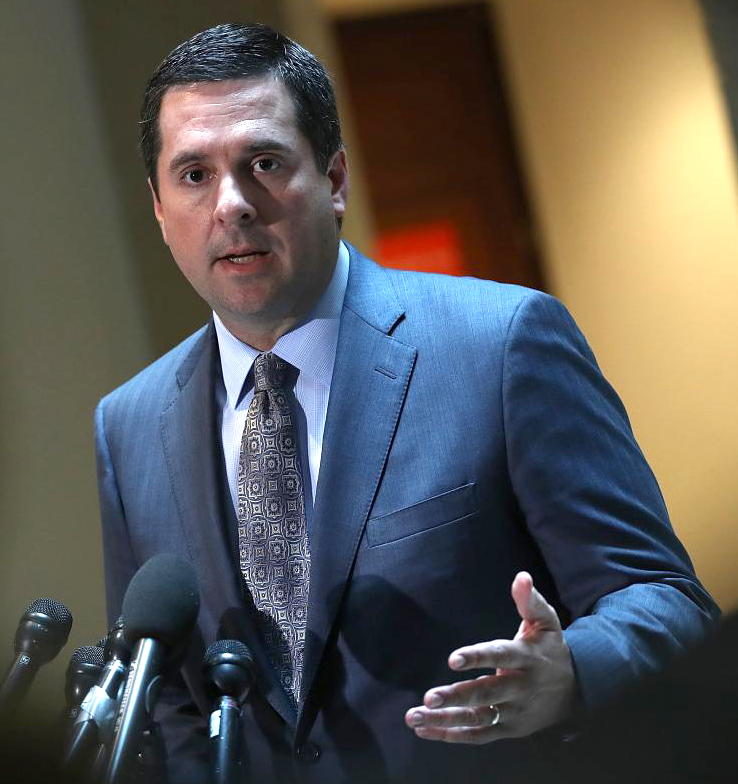
THIS WEEK IN FAKE NEWS
SCREENSHOT VIA TWITTER
The report that Trump was spreading “conspiracy talk” turns out to be fake news.
When the House Intelligence Committee was preparing to release its memo, which exposed how the Obama administration used Democrat-funded opposition research to spy on the Trump team, many conservatives began calling for the release of the memo.
The hashtag #ReleaseTheMemo began trending on Twitter, and Twitter quickly quashed the trending term and declared that it was the work of “Russian bots.” The narrative that Russian bats were trying to promote the memo was then used by Democrat leaders Dianne Feinstein and Adam Schiff to discredit the memo before it could be released, and they penned an open letter to Twitter and Facebook on Jan. 23 urging them to investigate the alleged “ongoing attack by the Russian government” to “manipulate public opinion.”
It turned out, however, that Twitter may have been the one trying to manipulate public opinion. To frame the narrative around "Russian bots," they had to fix the definition of the phrase-creating a definition so broad that nearly anyone could be labeled a Russian bot.
This work for Facebook and Twitter was done by GMF’s Alliance for Security Democracy, which uses flimsy criteria such as “patriotic” pro-Russia users that are either loosely connected to Russia or “unconnected” to the Russian government. It states that the alleged Russian bots are not all directly controlled by Russia, and that some users “may not understand” they are part of the Russian social network. It also admits “Not all content amplified by this network is pro-Russian,” “Not all content in this network is ‘created’ by Russia.” It then goes on to say, “We are not claiming that content producers linked by this network are Russian propaganda sites. Rather, content linked by this network is RELEVANT to Russian messaging themes.” In other words, the Affiance identified #ReleaseTheMemo as “relevant to Russian messaging themes,” which differs from saying it was produced by a Russian network. But this was part of the rationale for saying the hashtag was the product of Russian bots.
JOSHUA PHILIPP
WIN MCNAMEE/GETTY IMAGES

Rep. Devin Nunes (R-Calif.), chairman of the House Permanent Select Committee on Intelligence, answers questions during a press conference at the U.S. Capitol on March 7, 2017.
The House Intelligence Committee memo, released on Feb. 2, has confirmed that the Obama administration obtained FISA spy warrants on Trump associate Carter Page using the Trump dossier—discredited opposition research that the memo reports was financed by the Clinton campaign and the Democratic National Committee (DNC).
President Donald Trump called attention to the issue of who paid for the dossier early on but was broadly criticized by legacy news outlets for doing so.
On Oct. 19, 2017, Trump tweeted that “Workers of firm involved with the discredited and Fake Dossier take the 5th. Who paid for it, Russia, the FBI or the Dems (or all)?”
The tweet was in reference to Fusion GPS, the opposition research company that created the Trump dossier at the center of the Trump-Russia narrative.
Trump’s critics were quick to react, especially CNN. It published a story the same day, accusing Trump of sounding “crazy” and floating “conspiracy talk” for his suggestion on who may have financed the dossier.
The truth has gradually emerged, and the memo has finally made the key incidents clear.
Fusion GPS was hired to create the dossier by the Clinton campaign and the DNC through the law firm Perkins Coie. Christopher Steele, the British spy hired to collect the information, used unverified Russian sources still active in the Kremlin, and the FBI reimbursed some costs for the dossier. The memo has now confirmed the Obama administration used the opposition research to obtain FISA warrants and spy on the Trump campaign. The report that Trump was spreading “conspiracy talk” turns out to be fake news.